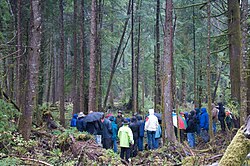
The United States Forest Service (USFS) is an agency of the U.S. Department of Agriculture that administers the nation's 154 national forests and 20 national grasslands, which encompass 193 million acres (780,000 km2). Major divisions of the agency include the National Forest System, State and Private Forestry, Business Operations, and the Research and Development branch. Managing approximately 25% of federal lands, it is the only major national land agency that is outside the U.S. Department of the Interior.

A forester is a person who practices forestry, the science, art, and profession of managing forests. Foresters engage in a broad range of activities including ecological restoration and management of protected areas. Foresters manage forests to provide a variety of objectives including direct extraction of raw material, outdoor recreation, conservation, hunting and aesthetics. Emerging management practices include managing forestlands for biodiversity, carbon sequestration and air quality.
The Indiana Department of Natural Resources (DNR) is the agency of the U.S. state of Indiana. There are many divisions within the DNR and each has a specific role. The DNR is not only responsible for maintaining resource areas but also manages Indiana's fish and wildlife, reclaims coal mine ground, manages forested areas, aids in the management of wildlife on private lands, enforces Indiana's conservation laws, and many other duties not named here. According to the department's website, their mission is "to protect, enhance, preserve, and wisely use natural, cultural, and recreational resources for the benefit of Indiana's citizens through professional leadership, management, and education".
The Forest Legacy Program was established in the 1990 Farm Bill to protect environmentally important forest lands that are threatened by conversion to nonforest uses. It provides federal funding for conservation easements and fee simple purchases.

The Michigan Department of Natural Resources (DNR) is the agency of the state of Michigan charged with maintaining natural resources such as state parks, state forests, and recreation areas. It is governed by a director appointed by the Governor and accepted by the Natural Resources Commission. Currently the Director is Keith Creagh. The DNR has about 1,400 permanent employees, and over 1,600 seasonal employees.
The Hawaiʻi Department of Land and Natural Resources (DLNR) is a part of the Hawaiʻi state government dedicated to managing, administering, and excerising control over public lands, water resources and streams, ocean waters, coastal areas, minerals, and other natural resources of the state of Hawaiʻi. The mission of the Hawaiʻi Department of Land and Natural Resources is to "enhance, protect, conserve and manage Hawaiʻi's unique and limited natural, cultural and historic resources held in public trust for current and future generations of the people of Hawaiʻi nei, and its visitors, in partnership with others from the public and private sectors." The organization oversees over 1.3 million acres of land, beaches, and coastal waters and 750 miles of coastal land.
The Oregon Forest Resources Institute (OFRI) is an educational organization based in the U.S. state of Oregon dedicated to forestry issues, including improving public understanding of the state's forest resources and encouraging environmentally sound forest management. It provides education, training and publications for forest landowners, students and teachers, and the general public. It also produces research on forest science and current issues. OFRI's seven-member staff is located in Portland.
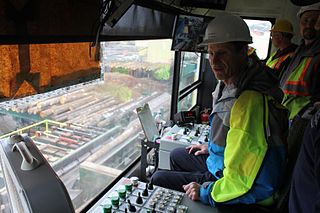
Collins is a family-owned American forest products company that began in operations July 28, 1855. Headquartered in Portland, Oregon, Collins was the first privately owned forest products company in the United States to have all of its hardwood and softwood forests certified by the Forest Stewardship Council (FSC). In addition to its forests and sawmills, Collins also manufactures siding and trim, particleboard, hardwood, and softwood lumber, and operates retail hardware and lumber yards in northern California. Divisions include: Collins Pine Company, Kane Hardwood, Collins Hardwood LLC, Collins Products LLC, Collins Builders Supply, and the Almanor Railroad.

Land use in Oregon concerns the evolving set of laws affecting land ownership and its restrictions in the U.S. state of Oregon.
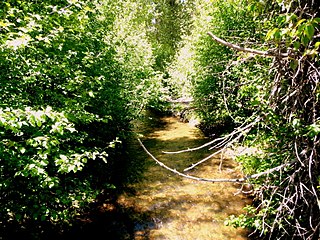
Sun Pass State Forest is one of six state forests managed by the Oregon Department of Forestry. The forest is located 40 miles (64 km) north of Klamath Falls, Oregon near the southeastern corner of Crater Lake National Park. It is the largest single block of Oregon state forestry land east of the Cascade Mountains. The forest is managed as part of the Klamath-Lake District, comprising 21,317 acres (86.27 km2) of the 33,739 state-owned acres within the district.

Santiam State Forest is one of six state forests managed by the Oregon Department of Forestry. The forest is located approximately 25 miles (40 km) southeast of Salem, Oregon, and includes 47,871 acres (193.73 km2) on the western slope of the Cascade Mountains in three Oregon counties: Clackamas, Linn, and Marion. It is bounded on the east by the Willamette National Forest and Mount Hood National Forest. Silver Falls State Park is located west of the forest. The rest of the land surrounding the forest belongs to the Bureau of Land Management or is privately owned. The forest is managed as part of the Department of Forestry's North Cascade District. It is the largest single block of state owned forest land in the Cascades.
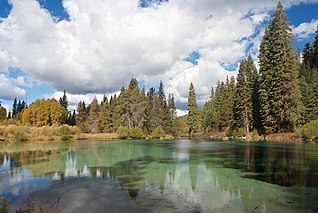
Jackson F. Kimball State Recreation Site is a state park in southern Oregon. The park is operated and maintained by the Oregon Parks and Recreation Department, and is located approximately 20 miles (32 km) southeast of Crater Lake National Park and 3 miles (4.8 km) north of Fort Klamath. The park was established in 1955, and covers 19 acres (7.7 ha) including the headwaters of the Wood River.
The Alaska Department of Fish and Game (ADF&G) is a department within the government of Alaska. ADF&G's mission is to protect, maintain, and improve the fish, game, and aquatic plant resources of the state, and manage their use and development in the best interest of the economy and the well-being of the people of the state, consistent with the sustained yield principle. ADF&G manages approximately 750 active fisheries, 26 game management units, and 32 special areas. From resource policy to public education, the department considers public involvement essential to its mission and goals. The department is committed to working with tribes in Alaska and with a diverse group of State and Federal agencies. The department works cooperatively with various universities and nongovernmental organizations in formal and informal partnership arrangements, and assists local research or baseline environmental monitoring through citizen science programs.
The Virginia Department of Forestry (VDOF) was established in 1914 to prevent and suppress forest fires and reforest bare lands. Since its inception, the agency has grown and evolved to encompass other protection and management duties:
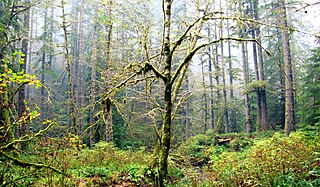
Elliott State Forest is a state forest in Coos and Douglas counties of the U.S. state of Oregon, between Coos Bay and Reedsport in the Oregon Coast Range. The first state forest established in Oregon, it is named after the state's first state forester Francis Elliott. Trees commonly found in this forest are the Douglas-fir, western hemlock, western redcedar, bigleaf maple, and red alder.

The Mississippi Forestry Commission (MFC) is a State Agency in Mississippi with headquarters in Jackson. The Forestry Commission was authorized "to prevent, control, and extinguish forest fires; enforce laws pertaining to the protection of forests and woodlands in the state; and encourage forest and tree planting for the production of a wood crop and other beneficial purposes". The agency was created in 1926.
The Montana Department of Natural Resources and Conservation (DNRC) is a government agency in the executive branch state of Montana in the United States with responsibility for ensuring sustainable development of the state's land, mineral, natural gas, oil, timber, water, and other resources.

The New Hampshire Division of Forests and Lands is a government agency of the U.S. state of New Hampshire. The division "protects and promotes the values provided by trees, forests, and natural communities." Brad Simpkins is director of DHR and the State Forester. The agency's main office is located in Concord.

